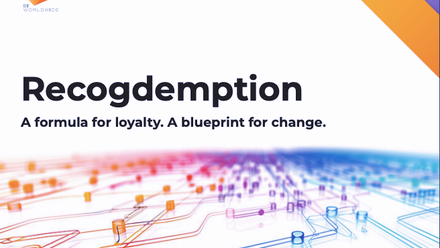How big data can help provide more meaningful, engaging communications

According to recent figures, over 90% of all the data in the world has been created in the last two years. Certainly in our industry, we are now working with enormous quantities of data, which can give us great insight into understanding target audiences.
Becoming an influencer
By analysing data patterns, we know how people act. If this is combined with user insight into why people do what they do, then you are in a powerful position to influence behaviours.
Companies of all shapes and sizes say that they are employee focused. However, putting employees at the heart of your communications strategy requires combining insight from both data analytics and from employees.
What the data will reveal is that there are still questions that need to be answered, and that we need insight into what motivates people to do what they do. As a result, data analytics are a great first step on the employee insight journey.
Using focus groups for greater insight
The data highlights unexpected areas to explore with probing discussions in focus groups. Data sets the agenda, and highlights areas requiring further exploration.
Focus groups provide answers to the questions not answered by the data. The result can be deeper, more intimate and three-dimensional knowledge about what really makes your employees tick.
As a user experience consultant I would always recommend talking to employees, the audience for your communications. Focus groups can make you rethink things you thought you knew.
Many of our clients have been surprised by the results of their focus groups; and often they have proved to be the foundation upon which future strategy and design work has been based.
Focus groups allow us to understand what employees know about a topic. They allow us to see things through the employees’ eyes, avoid assumptions, understand the terminology really used, and endorse and challenge conventional thinking. They enable us to explore the gap between what people say and what they do. They provide deep and meaningful understanding of your employees.
Talk to your employees, they might tell you a thing or two, that explains their behaviour.
The power of segmentation
Data analytics and employee insight also helps us create an employee segmentation strategy. Employee segmentation lets us target different groups of employees with the aim of improving awareness, understanding and take up of benefits.
There are many ways to slice and dice employee segments, such as age, income, life stage, previous benefits. We also overlay employee data with readily available marketing segmentation data, for example Experian’s Mosaic, to add another dimension – ‘what do people like them do?’.
Once we’ve analysed data, segmented your audiences and run focus groups, what do we do with the insight? Here are some recent examples:
- Creation of a pensions website
One client is creating a pensions website to inform its employees about its offering. After analysing their employee data, we ran focus groups with different segments where we got the employees to design the website. They generated over eighty design requirements, both in the design and content. - Simpler language
For another client we discovered, again through focus group exercises, that the language they were using to describe their benefits was too complex for their employees to understand. We created a writing guide that specifies how and at what level they need to write so that their people understand what they’re saying. - Email campaign
We analysed the pensioner data for one of the UK’s largest pension schemes before running focus groups to discover what was stopping them interacting with their pension online. Armed with this insight, we created an e-mail campaign aimed at allaying their biggest fear – online security. Record numbers of pensioners registered and interacted with their pension online for the first time.
So, we believe that the equation for success looks something like this:
(data analysis + segmentation) + user insight x targeted communications = engagement
And that takes us to the last part of the equation, Engagement, the result. How do we measure engagement?
Engagement metrics
Actually, that’s the easier bit. Once we’ve established baseline data from analytics, segmentation and employee insight, we can monitor and manage communications strategies.
The significant increase in digital communications means we can analyse engagement in real time, on a segment-by-segment basis, so that areas of relative success and those needing improvement or adjustment can be identified and responded to straight away.
The process is ever evolving – more data giving you even more insight on which to shape your strategy as your audience becomes more engaged.
David Niland is user experience consultant at Capita Employee Benefits
This article was supplied by Capita Employee Benefits
Supplied by REBA Associate Member, Capita Employee Solutions
UK leader in technology-enabled business process management and outsourcing solutions.







